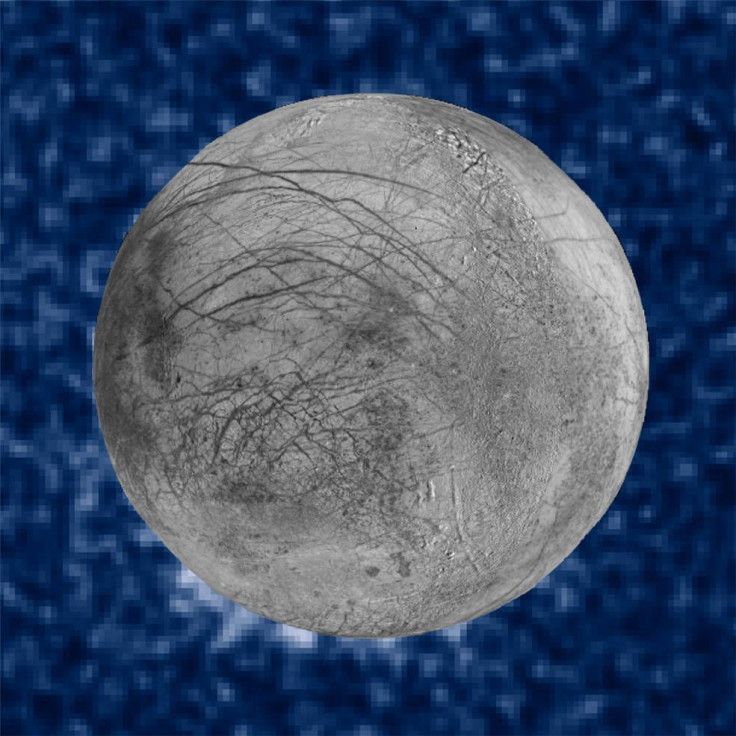Does Alien Life Exist? Europa Ice Plumes Could Help NASA Find Out [Photos And Video]

NASA scientists unveiled Monday new photographic findings that Europa, a moon of Jupiter, has a large ocean hidden beneath a thick sheet of ice that produces plumes of water. The plumes, scientists told reporters on a teleconference, could help the space organization get a better idea whether the planet has hospitable conditions for life forms.
The announcement is based upon ultraviolet photographs taken with the Hubble Space Telescope in 2014. Those photos, after extensive analysis by researchers, appeared to reaffirm past discoveries showing the plumes.
“For a long time humanity has been wondering whether there is life beyond Earth and we’re lucky to live in an era where we can address these questions scientifically,” Paul Hertz, director of the Astrophysics Division of NASA’s Washington, D.C. headquarters, said.
The findings aren’t necessarily groundbreaking for the layman space observer. Past experiments have indicated these plumes exist and the scientists themselves recognized during the call that this new analysis, while different, is only about as reliable as those in the past, which is significant. But the reaffirmation is seen as encouraging for the future analysis of the icy moon.
A planned future mission to the icy moon may be able to benefit from the findings since, if there are plumes of water that spout up, the remnants will land on the surface where NASA instruments can more easily analyze them. That’s a lot easier than drilling through miles of ice to find out what the composition of the ocean is.
“On Earth, life is found wherever there is energy, water and nutrients so we have a special interest in any place that might possess those characteristics and Europa might be one of those places,” Hertz said.
Taking a look at pictures wasn’t as simple as it sounds. The scientists used a system that tracked the arrival of each photon onto the photo and then, using software, were able to reconstruct what exactly happened in the areas where they think the plumes are coming from. That's why pictures taken in 2014 weren't reprorted until late 2016.
© Copyright IBTimes 2025. All rights reserved.






















